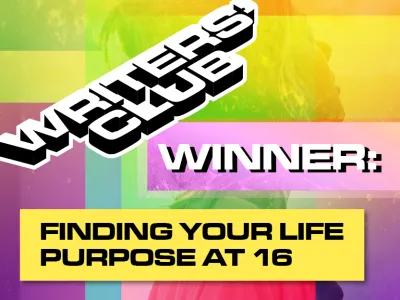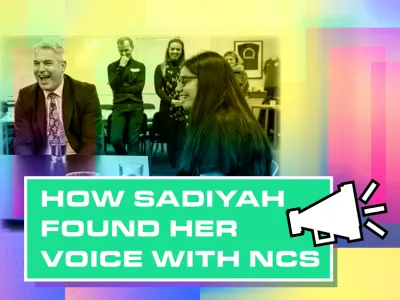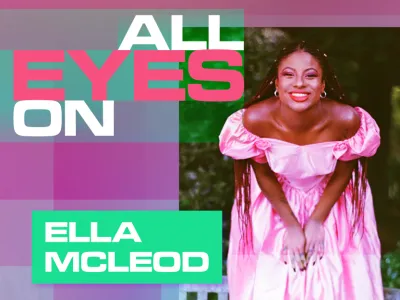
Why Ableism Is A Problem And What We Can Do About It
A little while ago we held a competition for new people to join our Writers’ Club. The winners have been picked and we’re really excited to see them produce new content on Connect, on subjects that matter to them. Over the next few weeks we’ll be sharing their winning pitch ideas so you can get to know them a little better.
This article is by Natalia, who speaks on her experience as a wheelchair user and how ableism isn’t always in-your-face-obvious…
The word ableism is a heavy one. Being another ‘ism’ term, it tends to make people uncomfortable. It is often seen as just another ‘woke’ expression that whistle-blowers use to shame individuals for offensiveness, that most others simply don’t see or agree exists. But as any person with a disability will tell you, ableism absolutely exists. Not only this, but having a word dedicated to representing this existence - the existence of the very real experiences of discrimination many have lived through as a direct result of their disability - is essential if we are to understand it and fight it.
Unfortunately, the ableism in our society is endemic and so there are just too many instances of it to count, let alone to squeeze into one article. Therefore, I’ve tried to pick out examples which are, in my opinion, some of the worst because they are the everyday occurrences of ableism. The habitual, casual ableism in society. I feel it’s right to mention here that I’m not by any means an expert on disability nor really qualified to speak about it, but I’ve experienced life through both able-bodied and disabled lenses and this contrast has opened my eyes to how inaccessible the world has become to people with physical and mental disabilities.
The first instance is the basic ableist design of society. It sounds overly broad but it’s true. There are cobblestone pavements which are impossible for wheelchair users and the use of opaque face masks which are restricting for deaf individuals or those who rely on lip reading. There are also stairs, blaring alarms, narrow doorways, steep curbs, standing queues with no seating options, exam halls – all of which are extremely challenging for individuals with a disability at the best of times, but become even harder when they aren’t designed accessibly. Yes, there are laws which enforce that shop doorways must be a certain width to allow for wheelchairs and that public toilets should include at least one accessible cubicle, but these don’t go far enough to make the foundations of society inclusive. The real inaccessibility of society, the basic design flaw if you like, is the attitudes of other people. You can’t change people’s attitudes with legislation alone.
As a temporary wheelchair user, the hardest part of everyday life for me is this inaccessibility caused by others. Take public transport for example. Buses aren’t hugely accessible anyway, but all are fitted with a ramp which the driver has to manually extend. After several journeys, you quickly discover that whether the bus driver is going to get up from his seat and lower said ramp for you is a complete lottery. I don’t want to give all bus drivers a bad rep because some are very accommodating, but some aren’t. I had one instance where a bus driver didn’t get up and lower the ramp but still had the audacity, after my mum had struggled for several minutes to lift me up over the step onto the bus, to criticise how she had manoeuvred the wheelchair – telling us that we should’ve “gone in backwards.” It wasn’t the design of the bus which became a barrier to me here, but the attitude of the one person who could’ve made my journey a little more accessible. Last year, Israeli Energy Minister, Karine Elharrar, was unable to attend the COP26 climate conference because it hadn’t been designed to include wheelchair access. I’ve been stepped over and even moved out of the way by people wanting to get past whilst I’ve been in my wheelchair. It’s instances such as these that highlight the frequency of such ableist occurrences in modern society.
There’s even a casual ableism in our language – in comments like ‘falling on deaf ears, ‘turning a blind eye ‘and ‘I’m so OCD.’ Mere weeks apart from each other, both Lizzo and Beyonce released songs that used the same ableist slur. It’s unlikely that this came from a place of malice, but eleven people are credited on the song writing for Beyonce’s album and yet none of them were educated enough to identify why the word would prompt such backlash. In June, a TikTok video went viral of a man who faked a foot injury to get himself and his friends fast tracked through airport security to avoid queueing. At the time, I’m sure he thought it would be fun to get pushed around in a wheelchair and skip all of the queues but what he failed to realise is that these resources are finite and his actions took them away from the people who really needed them. In 2013, Haben Girma, the first deaf-blind person to graduate from Harvard Law School, remarked “and people think my disability challenged me…the biggest challenge is ableism, not my disability.” Her comment encapsulates exactly what I’m trying to get at here: It’s not necessarily the ableist design of society which is the hardest thing, it’s the attitudes and judgements of the people that come with it. They are what is truly disabling.
The second example of casual ableism in our society is the image of disability. According to the Equality Act 2010, a disability is a “physical or mental impairment that has a ‘substantial’ and ‘long-term (more than 12 months)’ negative effect on your ability to do normal daily activities.” For such an inclusive definition, the picture society has painted as to what disability looks like is surprisingly narrow. This has led to public judgement on the ‘validity’ of an individual’s limitations and an invalidation of anyone who doesn’t fit the pre-packaged schema of what a disabled person is ‘supposed’ to look like. I’m currently an ambulatory wheelchair user (which means I'm disabled and I use a wheelchair but I am capable of walking in some circumstances) and so I fit into people’s schema of disability quite well. Nobody questions me because if there’s one thing that society has taught us about disabilities, it’s that disability equals wheelchair. However, I don’t always need, and won’t always need, to use a wheelchair and so I feel discrimination most on the days when I don’t need to rely on it as much. As soon as people see me stand up or walk without crutches, I get cold stares and I can almost hear the tutting from the other side of the street. Patience and understanding evaporates. Ableism has meant that disability only has one look. Visible equals valid.
I feel like I’ve spent a lot of time complaining and not offering solutions. But the truth is, I don’t know what the solutions are. I don’t think anyone does. But we have to start somewhere, and people usually start with education. It is our most powerful tool. Educate yourself on why certain terms and behaviours are problematic, what parts of society are inaccessible, how you can help to make them more accessible and ask questions. Ableism still exists and it’s still a problem but it’s people’s attitudes that can make the difference. Be kind and understanding, patient, willing to learn, and treat us like you would anyone else – at the end of the day, we’re still normal human beings!




